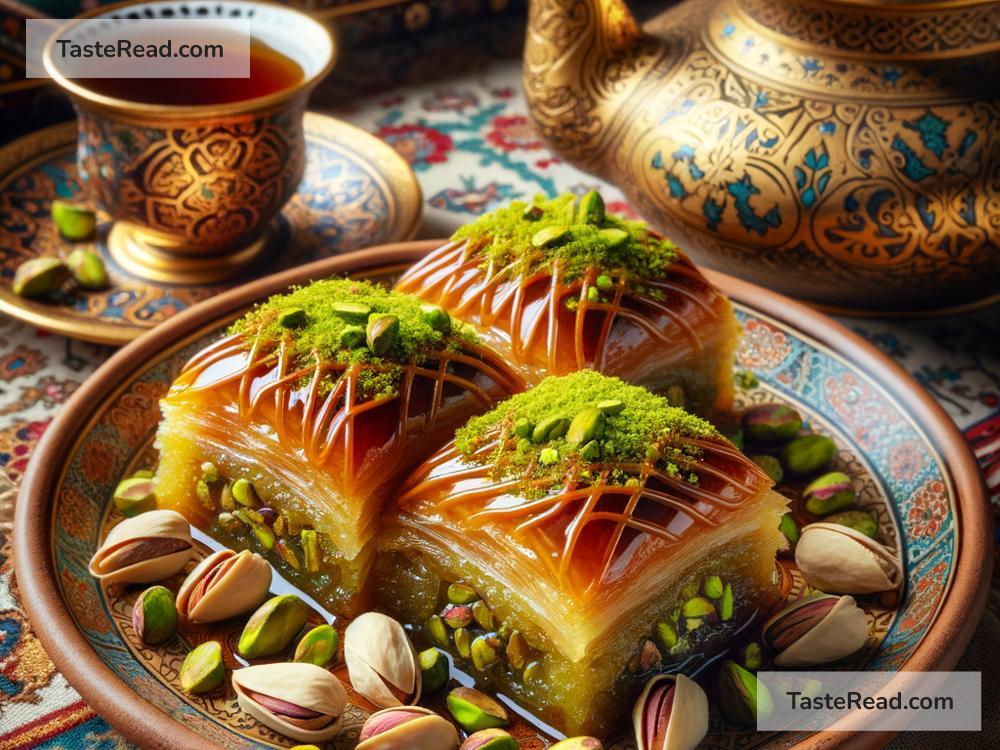Celebrating the Heritage of Persian Pistachio Baklava
Baklava. Just saying the word makes mouths water and imaginations drift to fragrant kitchens filled with rich, sweet aromas. Among the many variations of this beloved dessert, Persian pistachio baklava is a masterpiece. With its delicate layers, crunchy pistachios, and irresistible syrup, Persian pistachio baklava stands tall in the world of sweets. But it’s not just the flavor that’s extraordinary—it’s the heritage, history, and art behind it that deserve celebration.
What is Baklava?
Baklava is a pastry made with thin layers of dough called phyllo (or filo), filled with nuts like pistachios or walnuts, and drenched in a sweet syrup or honey. It’s popular in many cultures, and you’ll find versions of baklava in Greece, Turkey, the Middle East, and beyond.
Each variation is unique, depending on the country’s traditions and ingredients. Persian baklava, however, has a special charm. It’s not just a dessert—it’s a reflection of Persian history, hospitality, and cultural pride.
A Glimpse into Persian Heritage
Persian pistachio baklava goes back centuries. The art of pastry-making in Persia, which is modern-day Iran, has deep roots. Persian baklava reflects the region’s emphasis on intricate details, balance of flavors, and appreciation for premium ingredients.
Iran, known for its pistachios, grows some of the finest pistachios in the world. These green jewels are the heart of Persian pistachio baklava. They add crunch, flavor, and an unforgettable touch of luxury.
In Persian culture, sweets represent happiness and blessings. Baklava is often served during celebrations like weddings, births, and family gatherings. Offering baklava to guests is a gesture of warmth and hospitality, showcasing the host’s generosity.
What Makes Persian Pistachio Baklava Special?
While other types of baklava might use walnuts or almonds, Persian baklava often highlights pistachios. These nuts bring a unique flavor that’s earthy, creamy, and slightly sweet—perfect for balancing the richness of the pastry and syrup.
Another unique feature of Persian baklava is its syrup. Instead of honey, many Persian recipes use a syrup made with sugar, water, and rose water. Rose water gives baklava a floral aroma that’s unmistakably Persian. Its fragrant sweetness transforms this dessert into an elegant treat.
The texture is also key. Persian baklava isn’t overly sticky or heavy. The airy, golden layers of phyllo provide delicate balance, making the dessert light yet indulgent. Each bite melts in your mouth while offering a satisfying crunch from the pistachios.
Crafting Baklava: An Art Form
Making baklava is not just cooking—it’s an art. It requires patience and skill, especially when creating Persian pistachio baklava. Professionals and home bakers pay close attention to each detail, from layering the phyllo dough to blending the pistachios perfectly.
First, the phyllo sheets need to be thin enough to let the layers shine. Each sheet is brushed with melted butter to add flavor and crispness. Then comes the filling. Pistachios are often chopped finely with a touch of sugar or spices, giving them a finely textured crunch.
Once the assembly is complete, the baklava is baked until golden brown, filling the kitchen with a warm, nutty aroma. After baking, the rose water syrup is poured over the pastry while it’s still hot. This syrup seeps into every layer, creating a beautifully balanced sweetness.
Finally, the pastry is cut into diamond-shaped pieces, often decorated with a sprinkle of crushed pistachios or a pinch of saffron—another luxurious Persian ingredient. The result is visually stunning and utterly delicious.
Sharing Baklava with the World
Today, Persian pistachio baklava is enjoyed far beyond the borders of Iran. This dessert has found fans worldwide, thanks to its exquisite flavor and craftsmanship. Iranian communities across the globe carry on the tradition, sharing their recipes in bakeries, restaurants, and at home.
Modern food lovers are also experimenting with Persian baklava, adding twists like chocolate or exotic spices. While these modern adaptations are exciting, the traditional recipe remains a timeless symbol of Persian culture.
A Universal Treat
What makes Persian pistachio baklava especially remarkable is its universal appeal. Despite its deep Persian roots, it brings people together in shared appreciation for great food. Whether you’re in Tehran, London, or New York, a bite of Persian baklava can transport you to a world of beauty and tradition.
It reminds us of the importance of creativity and heritage in food. It proves that culture isn’t just about history—it’s alive in what we eat, how we cook, and how we share meals.
How to Celebrate Persian Pistachio Baklava
The best way to celebrate Persian pistachio baklava is to enjoy it! Visit a Middle Eastern bakery or restaurant and try authentic Persian baklava. Or, if you’re feeling adventurous, make it at home. It might require time and effort, but the reward is worth it.
If you’re hosting friends or family, serving baklava is a wonderful way to show hospitality and love. Pair it with Persian tea, seasoned with cardamom, for a truly traditional experience.
Finally, learn about the history and culture behind this dessert. Every bite is a celebration of Persian ingenuity, artistry, and flavor.
Conclusion
Persian pistachio baklava is more than a sweet treat—it’s a cultural treasure. Each layer, ingredient, and flavor tells a story about Persia’s rich heritage. It’s a dessert that bridges generations and connects communities around the world.
So next time you enjoy Persian pistachio baklava, take a moment to appreciate its history and artistry. Sweet and satisfying, it’s a delicious window into the beauty of Persian culture. Celebrating baklava means celebrating the creativity and passion behind all great cuisines—and remembering that food is a universal language we all share.


